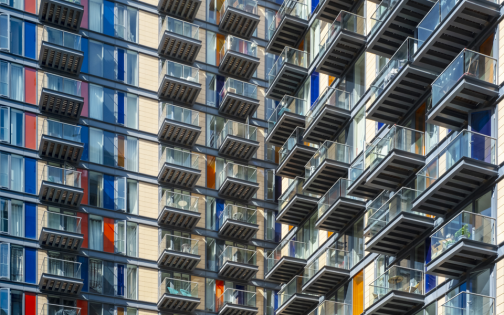
The influence of occupiers on energy use in PBSA

Students generally pay a flat rate for the energy used as set by so called ‘all-inclusive tenancy agreements’. This means that there are no additional charges for excessive energy consumption, so students do not feel a direct financial impact of excessive energy usage. Although some students with a desire to reduce their carbon emissions may keep a watchful eye on the energy they use, especially heating where the largest proportion of energy use occurs, it is unlikely that this will be replicated across all occupants in PBSA.
Whilst the asset managers of PBSA may not be able to effectively influence the behaviour of the students, the use of energy management systems allows energy use to be reduced through remote monitoring and control. The implementation of energy and specifically panel heating management systems can deliver immediate cuts to energy costs and carbon emissions. We will give an overview of how these systems help to deliver savings in this blog.
This whole topic is explored in detail in the SmarterDM by Dimplex white paper ‘Intelligent heating solutions – reducing carbon emissions and energy costs for hotels and student accommodation’ that is available as a free download.

How can intelligent heating management systems help reduce the influence of occupiers in PBSA?
Intelligent heating management systems allow the remote control of heating and cooling to student accommodations to help compensate for occupancy behaviour. The systems use a custom-built network of sensors to remotely manage the dynamic temperature control of individual rooms.
Students are out of their rooms attending lectures during the day and can often be elsewhere during the evening. In these situations, rather than relying on students to turn down the thermostat on their way out, the remote energy management system can ensure that the heating load is suitably reduced. This saves energy, with both financial and carbon-saving benefits for the asset manager.
The same applies to the periods in the year between term-times.
Student accommodation is seasonal, with three terms a year. This leaves around 16 weeks, or 30% of the year when the rooms do not require heating. The energy management system allows savings to be made by ensuring that only enough heating to prevent frost and mould damage during winter months is delivered.
Energy management systems also allow a good picture of energy use to be built up for each PBSA asset. This makes it easier to spot anomalies which may indicate that structural problems require attention or unusually high energy use by occupants that needs to be investigated. It enables a proactive approach to be taken to help keep energy costs and carbon dioxide emissions for the asset to a minimum.
As the energy used for heating in PBSA can equate to up to 70% of its running costs, the return on investment in an energy management system can be rapid. This was illustrated by one leading student accommodation provider where the annual savings of 28K achieved after installing a SmarterDM energy management solution paid for the system in just over two years.

Where can I find out more about the benefits of energy management systems for PBSA?
More information on the benefits of energy management systems for PBSA can be found in the SmarterDM white paper ‘Intelligent heating solutions – reducing carbon emissions and energy costs for hotels and student accommodation.’
SmarterDM by Dimplex is an innovative UK based software and hardware development company that delivers intuitive systems for PBSA assets to help monitor, report, and manage data in real time.
If you would like to find out how much your PBSA assets might save by using SmarterDM please contact us and our expert team will be in contact to complete a free indicative energy saving calculation.










